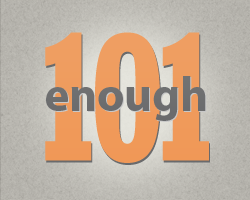
Editor’s Note: This post is a brief history, intended to provide a contextual background for understanding the complex issues that the Enough Project works on. It is part of the series Enough 101.
Acronyms to Know:
RPF – Rwandan Patriotic Front
ALiR – Army for the Liberation of Rwanda
AFDL – Alliance of Democratic Forces for the Liberation of Congo-Zaire
MONUC – United Nations Mission in the Democratic Republic of Congo
The First Congo War: October 1996 – May 1997
The post-Mobutu phase of the Congo’s history cannot be understood without factoring in neighboring countries, and the 1994 Rwandan genocide was the spark that lit the regional fire. In the Rwandan genocide, Hutu-power groups (called the Interahamwe and the Impuzamugambi) led mass killings of Tutsis and pro-peace Hutus, murdering 800,000 people in approximately 100 days.
In response, the Tutsi-led Rwandan Patriotic Front, or RPF, overthrew the Rwandan Hutu government.
During and after the genocide, an estimated 2 million refugees, mostly Hutu, poured over Rwanda’s western border into the Congo.
The refugee camps in eastern Congo served as de facto army bases for the exiled Interhamwe and Army for the Liberation of Rwanda, or ALiR, genocidaires. They terrorized and robbed the local population with impunity until October 1996, when eastern Congolese Banyamulenge (Tutsi) led an uprising to force the Rwandans out of the Congo, sparking the First Congo War.
In response, Rwandan and Ugandan armies backing Laurent-Désiré Kabila invaded the Congo. The combined effort was called the Alliance of Democratic Forces for the Liberation of Congo-Zaire, or AFDL. By December they controlled eastern Congo, and in May 1997 they marched into Kinshasa and overthrew Mobutu’s government. The country was re-named the Democratic Republic of Congo and Kabila took over as president in September 1997.
Second Congo War/ The Great War of Africa: August 1998 – July 2003
Despite the new government, the eastern Congo continued to be an unstable war zone. Kabila turned on his former backers (Rwanda and Uganda) and allowed Hutu armies to regroup in eastern Congo. This resulted in a Rwandan/Ugandan joint invasion in 1998. Neighboring countries came to Kabila’s rescue and temporarily halted the Rwandan and Ugandan troops. The five-year conflict pitted Congolese government forces, supported by Angola, Namibia, and Zimbabwe, against rebels and soldiers backed by Uganda and Rwanda.
In July 1999, the seven countries involved signed the Lusaka Peace Accord and 5,000 U.N. peacekeepers (the United Nations Mission in the Democratic Republic of Congo, or MONUC) were sent to monitor the situation.
In January 2001, President Kabila was assassinated by his bodyguard, and his son, Joseph Kabila, took over.
Joseph Kabila proved to be an adept negotiator and in 2002 completed successful peace deals that finally saw Rwanda’s and Uganda’s withdrawal from the Congo.
In December 2002, Kabila negotiated a peace deal with internal rebel groups, promising them a power-sharing interim government. This deal became official when Kabila signed a transitional constitution in April 2003.
The International Rescue Committee said that between August 1998 and April 2004 (when a bulk of the fighting occurred) some 3.8 million people died in the Congo.
For more on the Congo’s history, read last week’s Enough 101 post, “Congo: Colonialism through Dictatorship, 1400s-1997.”
For more information and to see the sources used in this post, check out the Enough Project's Congo Pinterest Board.

